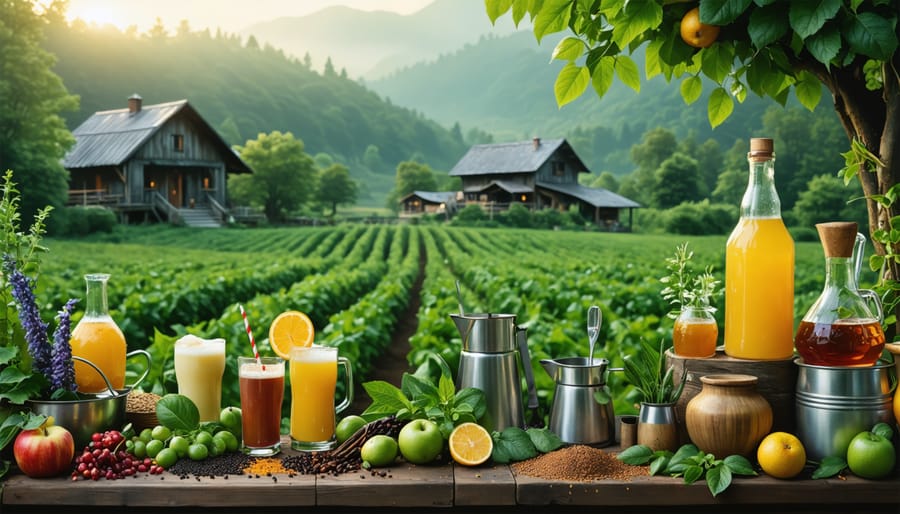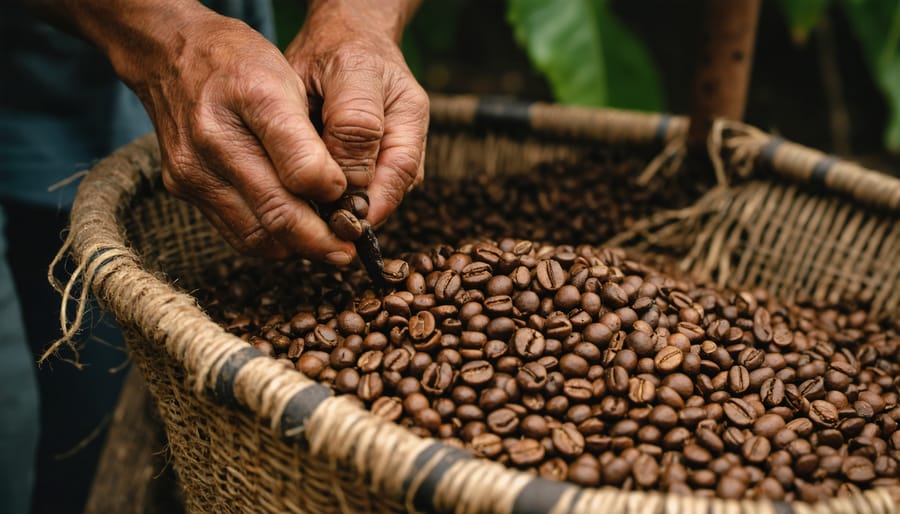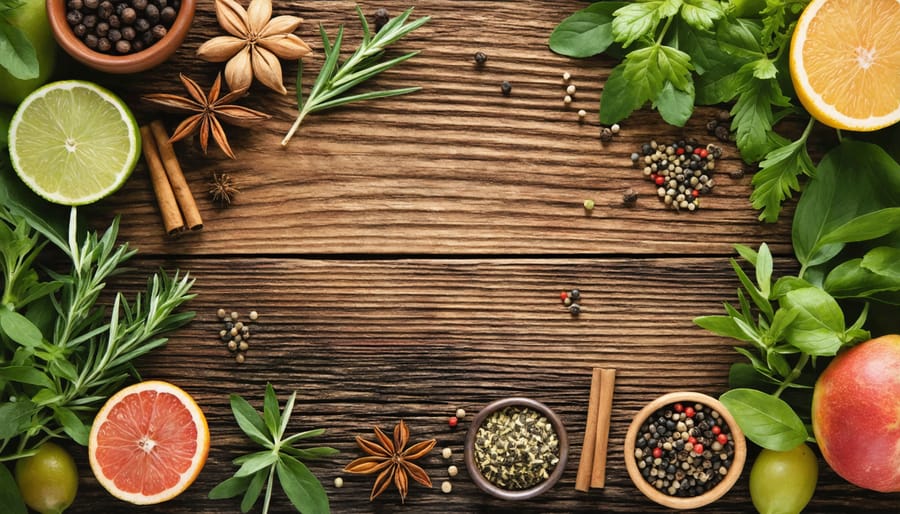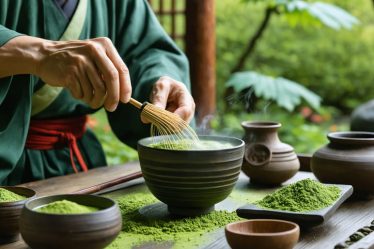
Transform your craft beverage production into an eco-conscious art form by mastering sustainable beverage crafting practices that honor both tradition and our planet. Source ingredients from local farmers who practice regenerative agriculture, reducing transportation emissions while supporting community ecosystems. Install energy-efficient brewing equipment and implement water recycling systems to minimize your environmental footprint without compromising product quality. Track your waste metrics and establish a closed-loop production system where spent ingredients become compost for future harvests.
The art of sustainable craftsmanship isn’t just about creating exceptional products—it’s about weaving environmental responsibility into every step of the creative process. From the carefully selected raw materials to the final packaging, each decision shapes not only the quality of your craft but also its impact on future generations. By embracing these mindful practices, artisans are pioneering a new standard of excellence that proves luxury and sustainability can coexist beautifully.
Let’s explore how traditional crafting wisdom, when combined with modern sustainable innovations, creates products that tell a story of responsibility, quality, and care for our shared environment.
The Art of Mindful Sourcing
Local vs. Global Ingredients
When I first started exploring sustainable craftsmanship, the choice between local and imported ingredients seemed overwhelming. Today, I understand that both options have their place in creating mindful, high-quality products. Local ingredients often come with a smaller carbon footprint and support nearby farmers and producers. They tell a story of your region’s unique terroir and help create that special connection with your community.
However, some specialty ingredients simply can’t be sourced locally, and that’s okay too. The key is finding the right balance. When selecting imported ingredients, look for suppliers who prioritize fair trade practices and sustainable farming methods. Consider factors like seasonal availability, quality consistency, and the environmental impact of transportation.
I’ve found that combining local staples with thoughtfully chosen global ingredients often leads to the most sustainable and innovative results. For example, you might use locally grown herbs and fruits as your base while incorporating responsibly sourced spices or specialty items from abroad. This approach supports both local economies and traditional farming communities worldwide while ensuring the highest quality in your final product.

Seasonal Wisdom
Nature’s calendar offers us an incredible guide to sustainable craftsmanship, and I’ve found that working with seasonal ingredients isn’t just better for the environment – it’s a game-changer for creating exceptional flavors. When we embrace what each season brings, we’re not only reducing transportation costs and carbon footprints but also capturing ingredients at their peak perfection.
Take summer berries, for instance. There’s simply no comparison between a sun-ripened local strawberry and one that’s traveled thousands of miles. In my experience, these seasonal gems require minimal intervention to shine, allowing us to create purer, more authentic products while using less energy and fewer preservatives.
Working seasonally also connects us to our local farming communities and helps us develop a deeper appreciation for natural cycles. I’ve noticed how this approach naturally leads to more creative and innovative crafting – when you’re limited to what’s available locally, you discover exciting new combinations and techniques you might never have considered otherwise.
Remember, the best sustainable practices often align perfectly with creating superior products. By following nature’s rhythm, we’re not just being environmentally conscious; we’re crafting better, more distinctive beverages that tell the story of their time and place.
Building Sustainable Relationships
Fair Trade Practices
When I first started exploring sustainable beverage crafting, understanding fair trade practices was a game-changer. Not just for the quality of my drinks, but for the impact they had on communities worldwide. Fair trade certification ensures that farmers and workers receive fair compensation for their hard work, creating a ripple effect of positive change throughout the supply chain.
What makes fair trade particularly special in beverage crafting is how it influences quality. When farmers earn living wages, they can invest in better farming practices, superior equipment, and sustainable methods. This translates directly into higher-quality ingredients – from coffee beans to tea leaves, and even exotic spices that enhance our creative concoctions.
I’ve noticed that customers are increasingly drawn to beverages with fair trade certification, not just for ethical reasons, but because they can taste the difference. The careful attention to detail at every step of production results in ingredients with more complex flavors and better overall characteristics.
To incorporate fair trade practices into your beverage crafting, start by sourcing certified ingredients from reputable suppliers. Look for the Fair Trade Certified™ label and build relationships with suppliers who share your values. Remember, every fair trade purchase supports not just quality craftsmanship, but also helps sustain farming communities and traditional agricultural practices that have been perfected over generations.
By choosing fair trade, we’re not just crafting better beverages – we’re helping craft better lives for producers around the world.

Supporting Small-Scale Producers
When I first started exploring sustainable craftsmanship, connecting with local farmers changed everything about how I approached my work. There’s something magical about knowing exactly where your ingredients come from and the faces behind each harvest.
Working with small-scale producers isn’t just about getting fresher ingredients – it’s about building lasting relationships that benefit everyone involved. Local farmers can provide unique, heritage varieties that you won’t find in mainstream supply chains, adding distinctive character to your creations. Plus, when you work directly with producers, you can ensure they receive fair compensation for their efforts, helping sustain traditional farming practices.
Small-batch suppliers often share your passion for quality and sustainability. They’re more likely to use environmentally friendly farming methods, preserve biodiversity, and maintain high ethical standards. By supporting them, you’re helping preserve traditional agricultural knowledge while promoting sustainable farming practices in your community.
The proximity of local suppliers also reduces transportation emissions and packaging waste. Many small-scale producers are happy to work with reusable containers and minimal packaging, which aligns perfectly with sustainable craftsmanship principles.
Remember that building these relationships takes time and patience. Start by visiting local farmers’ markets, joining community-supported agriculture programs, or reaching out to nearby family farms. The connections you forge will enrich your craft and contribute to a more sustainable local food system.
Waste-Conscious Creation
Zero-Waste Techniques
In today’s mindful beverage crafting, zero-waste techniques have become essential to the artisanal beverage making process. As someone who’s transformed my own crafting space, I’ve discovered that small changes can make a big impact. Start by implementing a closed-loop system where spent ingredients find new life – coffee grounds can become natural fertilizers, and fruit pulp transforms into delicious preserves or natural dyes.
Consider adopting the “root-to-fruit” approach, utilizing every part of your ingredients. Those citrus peels you might typically discard? They’re perfect for infusions or creating natural cleaning solutions for your equipment. Keep a dedicated container for collecting these “byproducts” and challenge yourself to find creative uses for them.
Storage solutions play a crucial role too. Invest in reusable containers, preferably glass or stainless steel, and establish a proper inventory system to prevent ingredients from going to waste. I’ve found that maintaining a “first in, first out” policy helps ensure nothing gets forgotten at the back of the shelf.
Remember, sustainable practices aren’t just good for the environment – they often lead to cost savings and can even enhance the quality of your final product.
Creative Reuse
In my workshop, I’ve discovered that some of the most exciting sustainability innovations come from reimagining what we once considered waste. Coffee grounds, typically destined for the compost bin, can be transformed into aromatic body scrubs or natural plant fertilizers. Tea lovers will be delighted to know that used tea leaves make excellent additions to garden soil, while dried herbs from tea blending can be repurposed into beautiful potpourri or natural air fresheners.
One of my favorite creative reuse practices involves citrus peels from craft cocktail making. These fragrant leftovers can be candied for garnishes, infused into cleaning solutions, or dried to create zesty seasoning blends. Even the pulp from fresh-pressed juices finds new life in our zero-waste kitchen as a natural pectin source for preserves or a fiber-rich addition to baked goods.
The spent grain from beer brewing has become a community favorite, with local bakers incorporating it into hearty breads and treats. We’ve also partnered with nearby farmers who use these nutrient-rich grains as livestock feed, creating a beautiful cycle of local sustainability.
Remember, creative reuse isn’t just about reducing waste – it’s about discovering new possibilities in every step of the crafting process.

Quality Through Sustainability
The Flavor Connection
When it comes to artisanal beverages, sustainable practices enhance flavor in ways that might surprise you. I’ve discovered through conversations with countless craftspeople that ingredients grown with respect for the earth simply taste better. Think about a coffee bean cultivated under natural shade or grapes grown without harsh pesticides – they develop deeper, more complex flavor profiles.
The magic lies in the slower, more intentional growth processes. When plants aren’t rushed with artificial fertilizers, they have time to develop their natural defense mechanisms and deeper root systems, resulting in more concentrated flavors. This is something I learned while visiting a small-batch tea producer who showed me how their organic leaves carried subtle notes that mass-produced alternatives couldn’t match.
The absence of synthetic chemicals also means you’re tasting the pure expression of the ingredient, not masked by artificial additives. It’s like the difference between a garden-fresh tomato and one from a supermarket – there’s simply no comparison in taste and quality. This natural approach not only benefits our planet but delivers a superior sensory experience that your customers will definitely notice.
Customer Education
In today’s conscious consumer landscape, sharing the story behind sustainable practices has become as important as the practices themselves. When customers understand the journey of their artisanal beverages, from sourcing to production, they develop a deeper appreciation for the craft and its environmental impact. This connection to evolving beverage trends helps build lasting relationships between makers and consumers.
Consider creating engaging content that showcases your sustainability journey through social media stories, blog posts, or even in-person workshops. Share behind-the-scenes glimpses of your sustainable practices, from water conservation methods to eco-friendly packaging choices. Personal stories about why you chose specific sustainable materials or traditional techniques can resonate deeply with your audience.
Remember to highlight the tangible benefits of sustainable craftsmanship – how it enhances flavor profiles, supports local communities, and preserves traditional methods. When customers understand these connections, they’re more likely to value and support sustainable practices, creating a positive cycle of conscious consumption and production.
As we’ve explored throughout this journey, sustainable craftsmanship isn’t just a trend – it’s a meaningful way to create beautiful, lasting products while honoring our planet. By embracing these eco-conscious practices, we’re not only preserving traditional techniques but also innovating for a better future. I’ve witnessed firsthand how small changes, like choosing local materials or implementing zero-waste policies, can transform both our creative process and final results.
Remember, sustainable craftsmanship is about progress, not perfection. Whether you’re just starting out or looking to enhance your existing practices, every mindful choice makes a difference. From reducing water usage to selecting renewable materials, each step contributes to a larger movement of conscious creation.
I encourage you to start your own sustainable crafting journey today. Join our growing community of mindful makers who are proving that quality and sustainability go hand in hand. Together, we can create beautiful, meaningful pieces that tell a story of respect – for our craft, our resources, and our environment. Let’s craft a better tomorrow, one sustainable project at a time.



